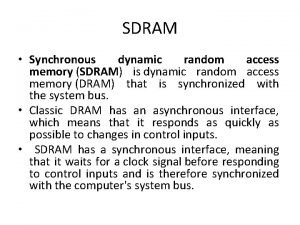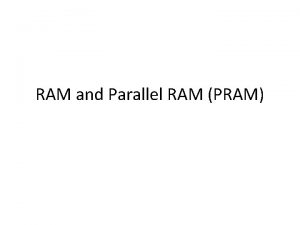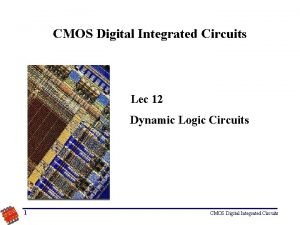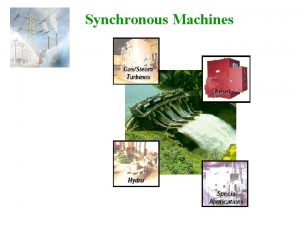SDRAM Synchronous dynamic random access memory SDRAM is







- Slides: 7

SDRAM • Synchronous dynamic random access memory (SDRAM) is dynamic random access memory (DRAM) that is synchronized with the system bus. • Classic DRAM has an asynchronous interface, which means that it responds as quickly as possible to changes in control inputs. • SDRAM has a synchronous interface, meaning that it waits for a clock signal before responding to control inputs and is therefore synchronized with the computer's system bus.

• The clock is used to drive an internal finite state machine that pipelines incoming commands. The data storage area is divided into several banks, allowing the chip to work on several memory access commands at a time, interleaved among the separate banks. This allows higher data access rates than an asynchronous DRAM.

RDRAM • Direct Rambus DRAM • or DRDRAM (sometimes just called Rambus DRAM or RDRAM) is a type of synchronous dynamic RAM. • RDRAM was developed by Rambus inc. , in the mid-1990 s as a replacement for thenprevalent DIMM SDRAM memory architecture.

• RDRAM was initially expected to become the standard in PC memory, especially after Intel agreed to license the Rambus technology for use with its future chipsets. • Further, RDRAM was expected to become a standard for VRAM. However, RDRAM got embroiled in a standards war with an alternative technology - DDR SDRAM, quickly losing out on grounds of price, and, later on, performance. By the early 2000 s, RDRAM was no longer supported by any mainstream computing architecture.

DDRAM or DDR SDRAM • Double data rate synchronous dynamic randomaccess memory (DDR SDRAM) is a class of memoryintegrated circuits used in computers. DDR SDRAM (sometimes referred to as DDR 1 SDRAM) has been superseded by DDR 2 SDRAM and DDR 3 SDRAM, neither of which is either forward or backward compatible with DDR SDRAM, meaning that DDR 2 or DDR 3 memory modules will not work in DDR-equipped motherboards, and vice versa.

• Compared to single data rate (SDR) SDRAM, the DDR SDRAM interface makes higher transfer rates possible by more strict control of the timing of the electrical data and clock signals. Implementations often have to use schemes such as phase-locked loops and selfcalibration to reach the required timing accuracy. • The interface uses double pumping (transferring data on both the rising and falling edges of the clock signal) to lower the clock frequency.

• One advantage of keeping the clock frequency down is that it reduces the signal integrity requirements on the circuit board connecting the memory to the controller. • The name "double data rate" refers to the fact that a DDR SDRAM with a certain clock frequency achieves nearly twice the bandwidthof a SDRAM running at the same clock frequency, due to this double pumping.













